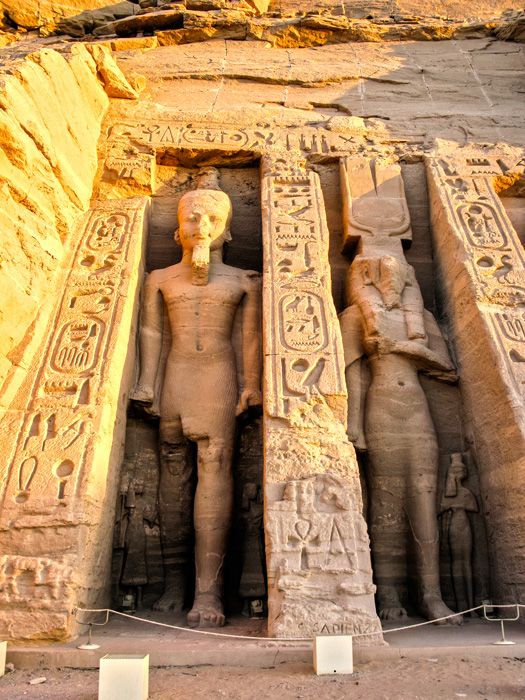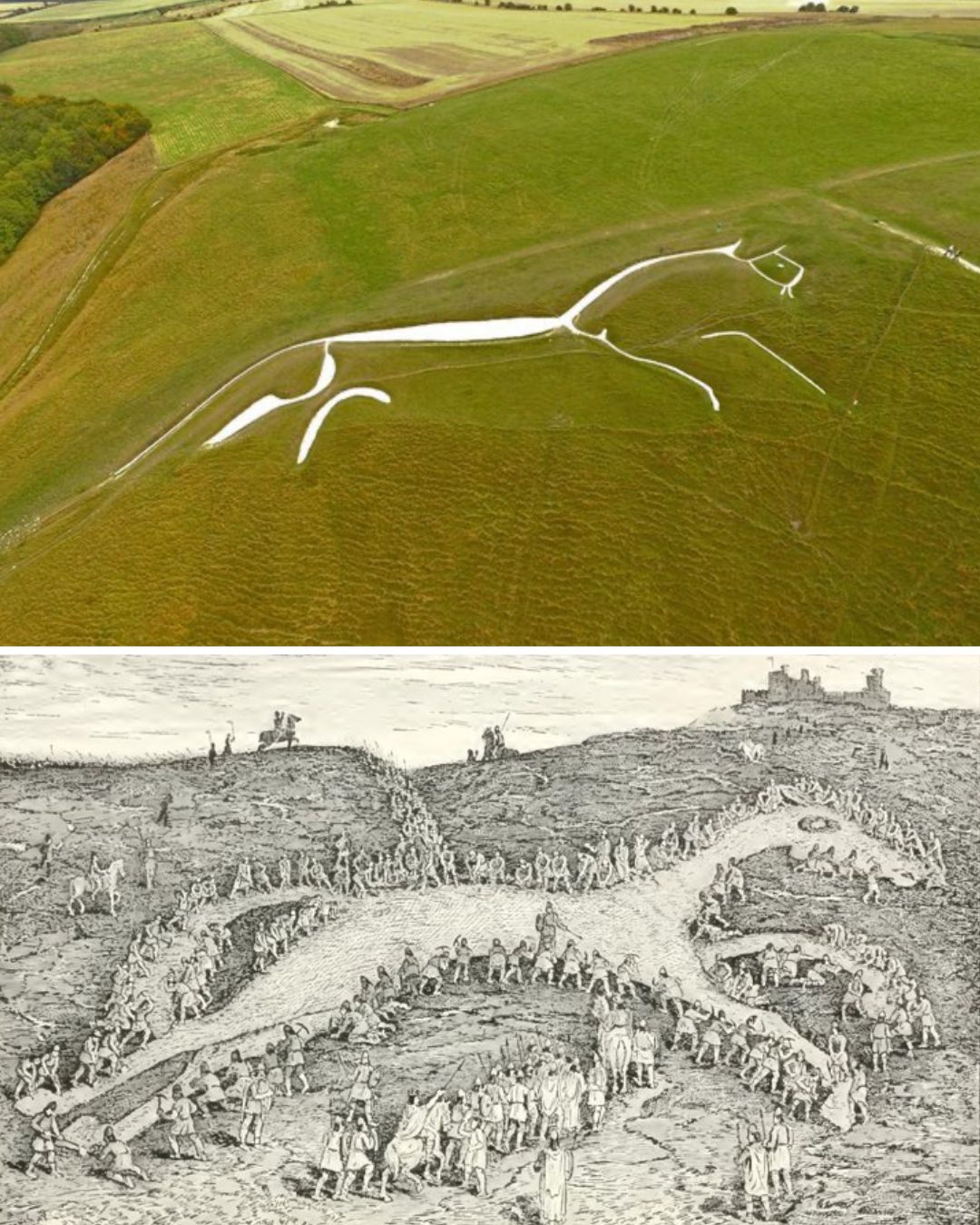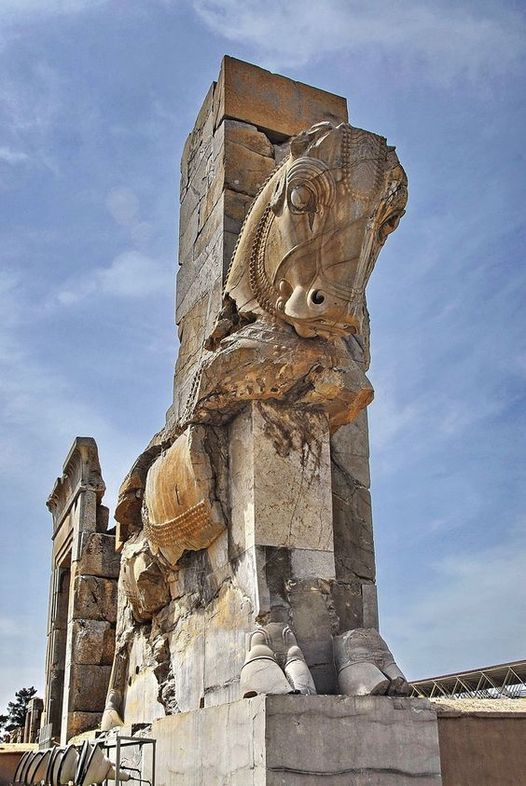The Grand Hall of the Great Temple of Abu Simbel stands as a testament to the grandeur and power of ancient Egyptian architecture. Situated on the banks of the Nile in southern Egypt, this monumental structure was commissioned by Ramses II during the 13th century BCE. At the heart of the temple lies the magnificent Hypostyle hall, adorned with eight towering pillars, each adorned with Osiriform statues. These colossal figures, four on each side, depict Ramses II himself, holding the symbols of royal authority: the scepter and the whip.

The Osiriform statues of Ramses II in the Grand Hall of Abu Simbel are a striking representation of the pharaoh's divine kingship. With their imposing stature and regal demeanor, they exude power and authority. On one side of the hall, Ramses II is depicted wearing the Double Crown, symbolizing his rule over both Upper and Lower Egypt. On the other side, he wears only the Upper Egypt Crown, a nod to the challenges of reproducing the Lower Egypt Crown in stone due to the temple's rock-carved construction.
Adorning the ceiling of the Grand Hall are vibrant frescoes depicting Nekhbet, the vulture goddess associated with protection and sovereignty. Her presence blesses the temple and ensures its eternal safeguarding. The walls of the hall are adorned with intricate scenes depicting various events from Ramses II's reign, including the famous Battle of Kadesh, the siege of cities, and the procession of captives. These vivid depictions bring the history of ancient Egypt to life, offering a glimpse into the military prowess and cultural achievements of the time.
In addition to its grandeur and artistic significance, the Grand Hall of Abu Simbel also served practical purposes. Flanking the hall on either side are small rooms believed to have been used as storerooms. These chambers would have housed offerings, supplies, and other provisions essential for the temple's rituals and ceremonies. Their presence underscores the temple's role as a religious and administrative center in ancient Egypt.

Archaeologists have played a crucial role in uncovering the secrets of the Grand Hall of Abu Simbel and shedding light on its historical and cultural significance. Through meticulous excavation and research, they have pieced together the story of this remarkable structure, illuminating its importance in ancient Egyptian society. Today, the temple stands as a UNESCO World Heritage Site, attracting visitors from around the globe to marvel at its splendor and immerse themselves in the rich history of Egypt.










